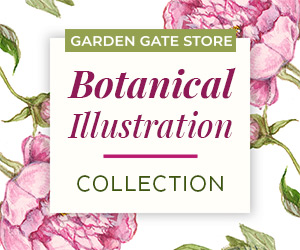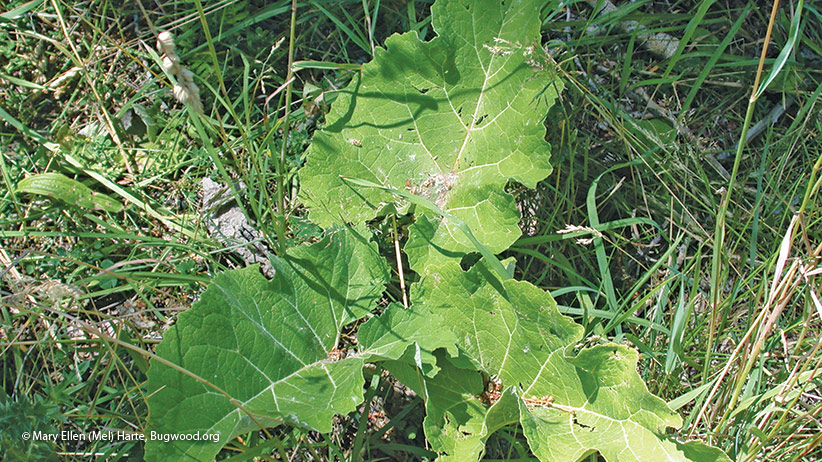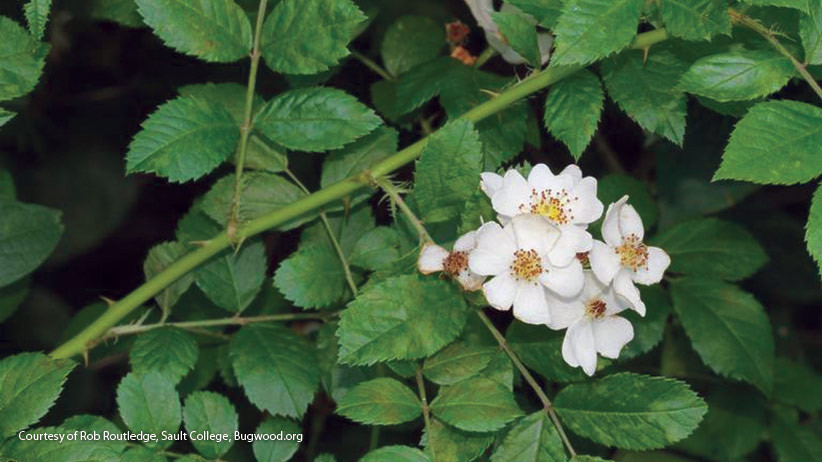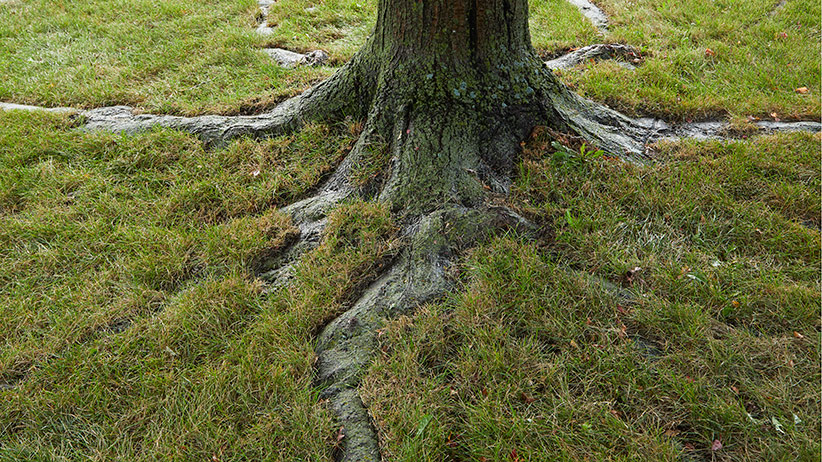
Beneficial companion plantings
If you’re looking for ways to reduce your chemical usage and let plants help each other solve problems like pests, weeds and even staking, Jessica Walliser has some good advice in her new book, Plant Partners: Science-Based Companion Planting Strategies for the Vegetable Garden. “I knew there had to be research out there that looked at the actual ways plants affect each other, and I wanted to find it and pull it together in a form that is accessible to the average gardener,” Jessica says.
A look at the science behind companion planting
Jessica discovered dozens of well-studied partnerships that offer fresh strategies for solving all sorts of issues in the garden, including how to break up heavy soils, combat weeds and diseases, lure pests away, attract specific beneficial insects and even improve pollination.
“While I did do a good bit of experimentation in my own garden with the partnerships I recommend throughout the book,” she says, “what matters more to me is the success researchers had when conducting their studies. Their investigations are far more controlled than my ‘backyard scientific methods’, and there’s no doubt their data is collected and analyzed in a far better manner than me scribbling notes in a journal.”
Powerful companion plantings
Though they are artificially created environments, gardens are ecosystems where many layers of organisms interact with each other in all kinds of ways. And the more organisms you have in that ecosystem, according to Jessica, the more stable it becomes. Living mulches, for example, have been shown to reduce weeds. Living mulch is a cover crop interplanted around other plants, retaining moisture, improving soil fertility and increasing beneficial insect habitat. Other plants work well together because one can hold the other one up. Others minimize disease and can even reduce pests. If you’ve had trouble with aphids or Colorado potato beetles eating your vegetables, there’s a pairing that can help. Let’s take a look at some of these companion planting strategies and the science behind their success.
You Might Also Like:
Three Sisters Companion Plantings
Gardener's Problem Solver Guide Book
4 Combos Butterflies Love
7 Common Garden Pests
Lure pests away
Growing the right combination of plants not only looks good but can encourage a healthy population of beneficial insects that prevent pests from becoming a big problem.
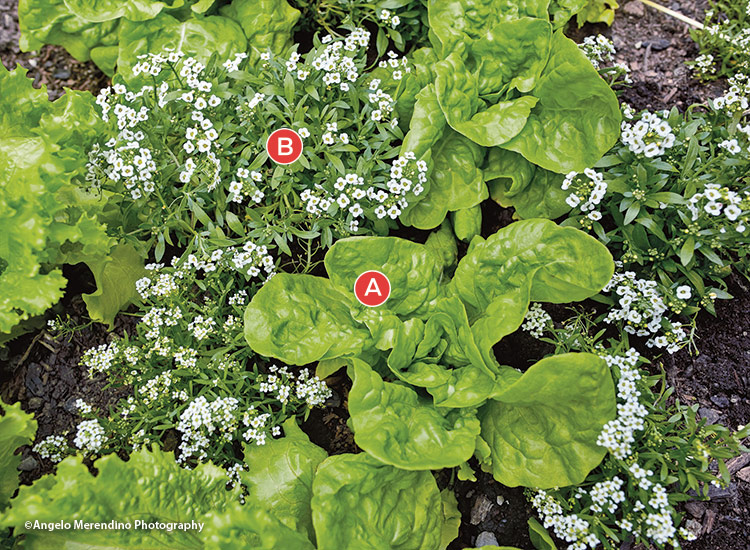
Lettuce + Sweet Alyssum
Jessica discovered several studies that examined the usefulness of the common flowering annual sweet alyssum for the biological control of aphids. Since lettuce and grapes are both particularly prone to aphid infestations, farmers have been interplanting their fields and vineyards with rows of sweet alyssum to control the pests. You can achieve similar results at home by planting alyssum along the edges of a vegetable bed.
Good bugs vs. bad bugs in the garden
Sweet alyssum has been found to be an excellent food source for hoverflies and parasitic wasps that help manage the aphids. The beneficial flies and wasps feed on its nectar and pollen. Then flies lay their eggs on nearby aphid-infested plants and their larvae feed on the aphids. The wasps insert eggs into the aphids that hatch inside and eventually pupate and emerge, leaving the aphid’s carcass behind
A) Lettuce Lactuca sativa
Annual; types include romaine, butterhead, iceberg, and loose leaf; full sun to part shade; 6 to 12 in. tall and wide
B) Sweet alyssum Lobularia maritima
Tender perennial; clusters of fragrant, tiny, white four-petaled flowers from spring to early summer; full sun to part shade; 3 to 9 in. tall, 6 to 14 in. wide; cold hardy in USDA zones 10 to 11
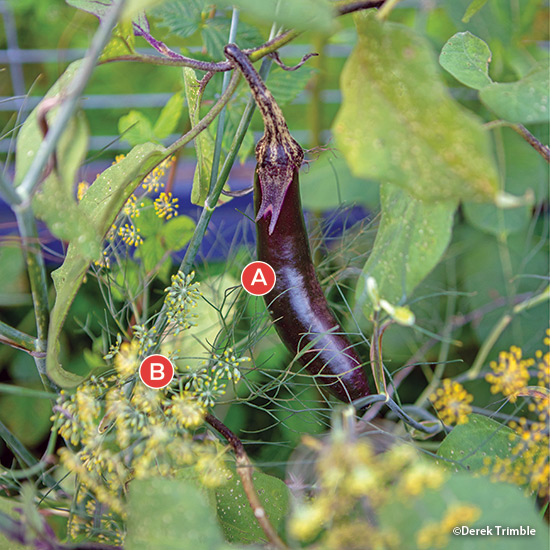
Eggplant + Dill
In an agricultural study examining the presence of Colorado potato beetle in eggplant fields, dill was planted in alternating strips with the eggplants and was found to increase a number of beneficial insects that prey on Colorado potato beetles. Predatory insects like hoverflies and parasitic wasps are drawn to the nectar and pollen of dill blooms, but end up feeding on the Colorado potato beetles (and their larvae) that they find on the nearby eggplants.
Proven companion plantings
In the home garden, where you might just have one or two eggplant plants as opposed to long rows of them, planting dill within a few feet may be all you need to lure in enough predatory insects to keep beetles and their larvae in check. Be sure to sow your dill seeds in spring, but wait to plant out your eggplant seedlings until all threat of frost or cold nights has passed.
A) Eggplant Solanum melongen
Annual vegetable; many sizes and shapes of fruit with black-purple to purple-green to gold or white skin; full sun; 2 to
8 ft. tall, 1 to 2 ft. wide
B) Dill Anethum graveolens
Tender perennial; fragrant yellow flowers in midsummer in large, flattened umbels; full sun; 3 to 5 ft. tall, 2 to 3 ft. wide; cold hardy in USDA zones 7 to 11
You Might Also Like:
Calculate How Many Vegetables to Plant
Colorful Summer Garden Bed Ideas
Identifying Weeds in the Garden
Combat weeds
You don't have to buy bags of mulch or landscape fabric to keep weeds from taking over. Let companion planting do the job for you.
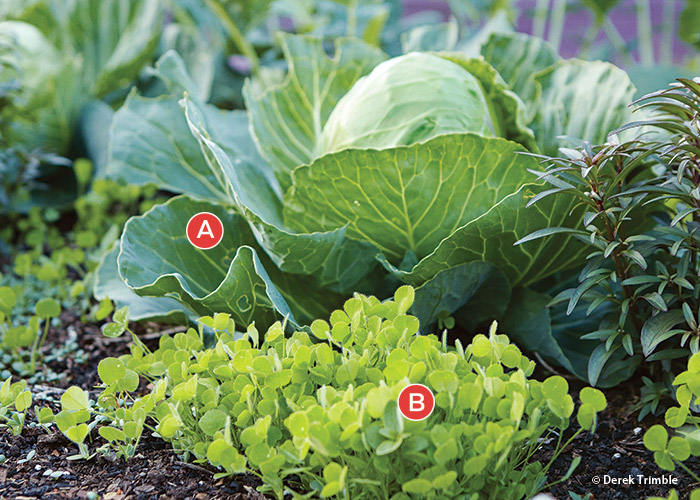
Cabbage + Crimson Clover
Used as a living mulch, crimson clover suppresses weeds by forming a thick mat that provides food and habitat to beneficial insects. It also improves soil health by boosting nitrogen levels.
Many studies have proven the benefits of using crimson clover around most cole crops, such as broccoli, kale, cauliflower and Brussels sprouts, because annual weeds are most problematic in cole crops’ production.
Seed sowing tips
An annual, crimson clover prefers cooler temperatures (between 40 and 70 degrees F) and will die back in either extreme heat or cold. Sow seeds at the same time as you sow your cabbage seeds in spring or in late summer (so that plants can become established before cold weather comes). Broadcast crimson clover seeds into raked soil so that they are about 2 inches apart and ½ inch deep. No thinning is required.
A) Cabbage Brassica oleracea var. capitata
Annual vegetable; several types, including those with green leaves, red leaves and wrinkled leaves; full sun; 8 to 18 in. tall, 10 to 30 in. wide
B) Crimson clover Trifolium incarnatum
Annual; bright red conical blooms in summer; full sun; 1 to 3 ft. tall and wide
Provide support
Vining vegetables need support in order to grow their best. Sure, you can install a trellis but flowering plants do a great job of holding up vines and provide long-lasting color in your vegetable garden, too.
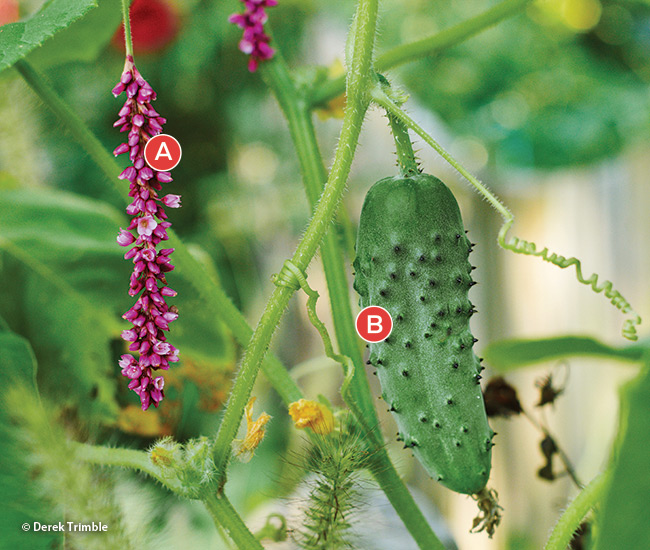
Gherkin Cucumbers + Kiss-Me-Over-the-Garden-Gate
Kiss-me-over-the-garden-gate is an annual that reaches a height of up to 8 feet with a thick, sturdy stem and many side branches, each covered with drooping clusters of bright pink flowers. It’s easy to grow from seeds sown directly into the garden in spring, and Jessica suggests pairing it with small gherkin type cucumbers. These petite cucumbers (or any cucumber harvested young) won’t weigh down the branches and can be harvested in summer and early fall.
Train it up
Wait to plant the cucumber seeds directly into the garden until kiss-me-over-the-garden-gate seedlings reach about a foot in height. Plant one or two cucumbers for each kiss-me-over-the-garden-gate plant. You may have to train the cucumbers to grow up the plant stem by aiming them in the right direction.
A) Cucumber Cucumis sativus
Annual vegetable; select gherkin or pickling types that produce fruits less than 6 in. long; full sun; 6 to 12 in. tall, spreading
B) Kiss-me-over-the-garden-gate Polygonum orientale
Annual; pendulous racemes of white to red flowers in summer to frost; full sun; 4 to 8 ft. tall, 2 to 4 ft. wide
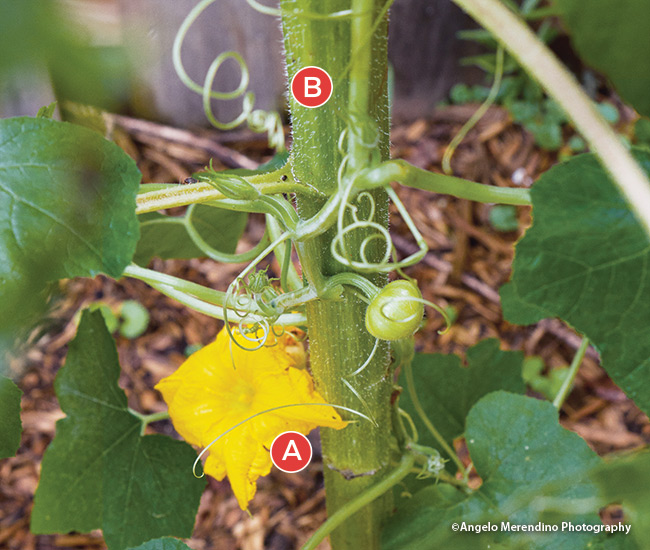
Mini Pumpkins + Sunflowers
Tall, sturdy sunflowers are especially well suited to serve as a living trellis for climbing companions. To support mini pumpkin vines, Jessica suggests avoiding dwarf or slender-stemmed varieties and instead planting highly branched, multiflowered types of sunflowers like ‘Soraya’ or ‘Lemon Queen’. Branched sunflowers work best with pumpkins because pumpkin vines grow in multiple directions.
‘Baby Boo’, ‘Jack Be Little’, 'Mini Jack' and ‘Lil’ Pump-ke-mon’ are all suitable mini pumpkin varieties for this companion planting.
Sow them right
For this partnership, start the sunflowers seeds indoors four to six weeks before transplanting outdoors after all danger of frost has passed. For the best results, delay planting the pumpkins and give the sunflowers a chance to reach a foot or two in height. Direct sow the pumpkin seeds right in the garden; plant one mini pumpkin vine for every 5 to 6 feet of a row of sunflowers.
A) Mini pumpkin Cucurbita pepo
Annual vegetable; mini pumpkin varieties weigh 2 pounds or less and are perfect for decorating; full sun; 12 to 18 in. tall, 12 to 36 in. wide
B) Sunflower Helianthus annuus
Annual; ray flowers in bright and pastel shades of yellow, red, mahogany, bronze, white and bicolors from summer to frost; full sun; 1 to 15 ft. tall, 2 to 3 ft. wide







